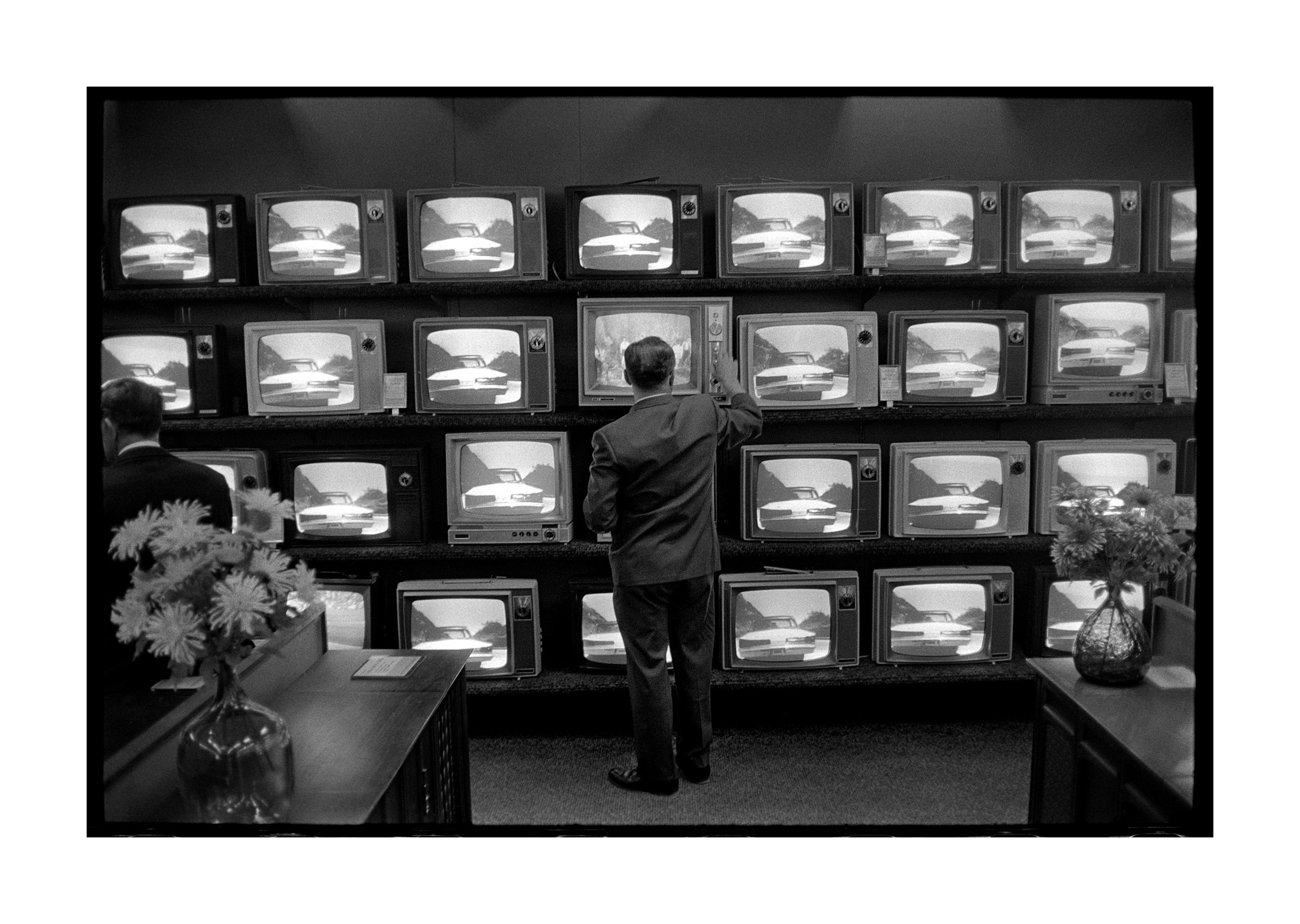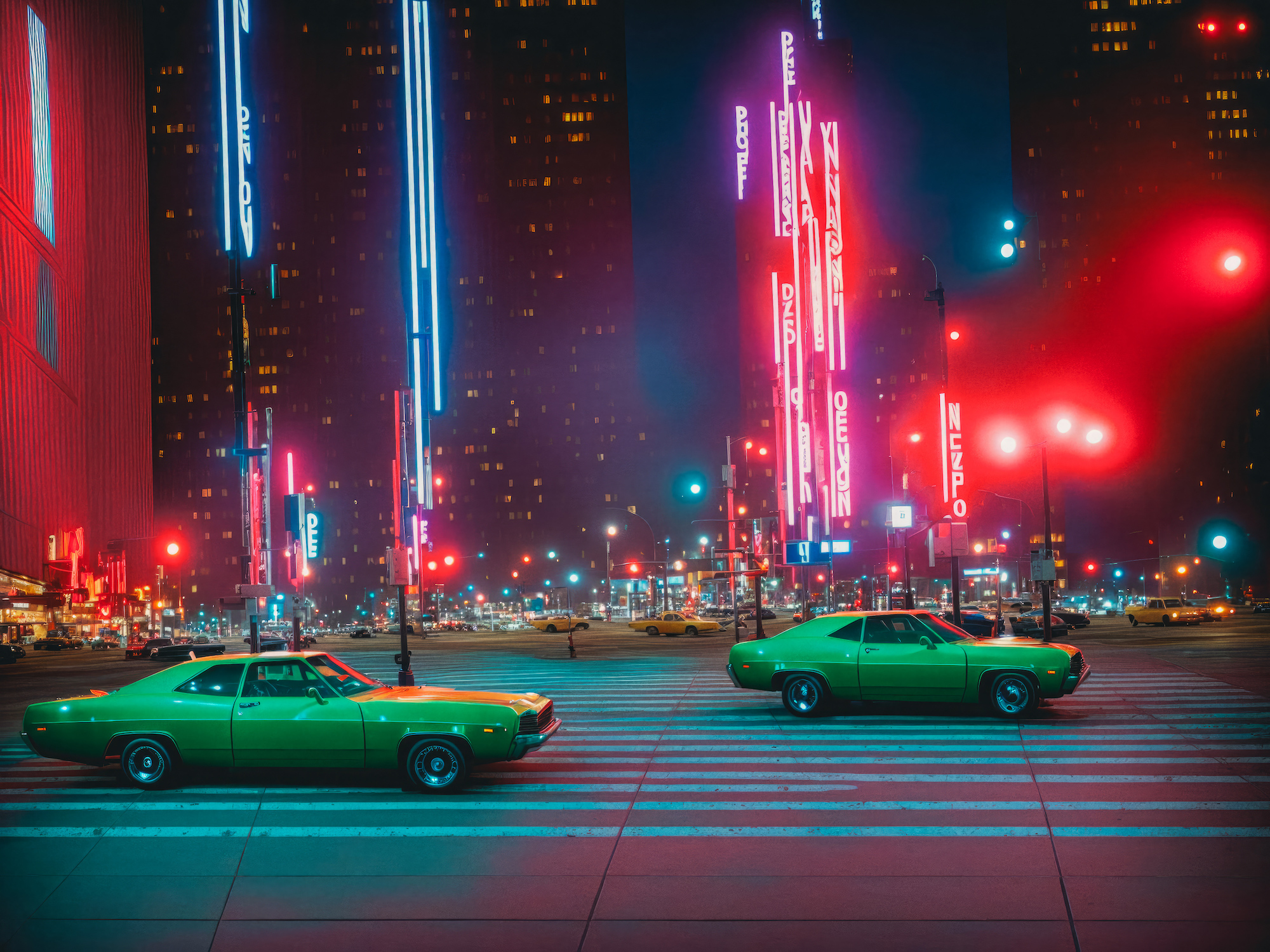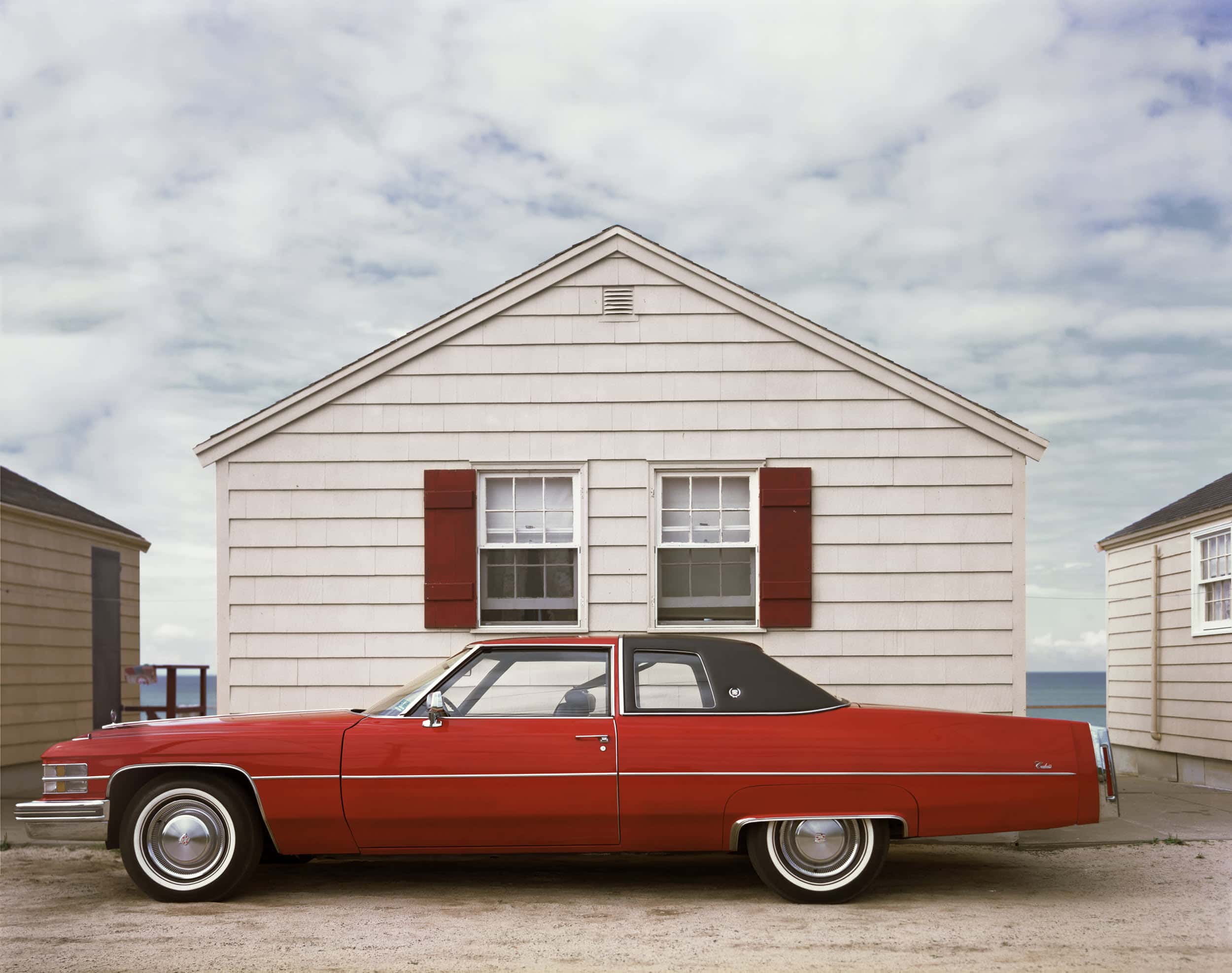Inquire
137 Reserve Club
Make an offer
Joel Meyerowitz
Between the Dog and the Wolf
Joel Meyerowitz
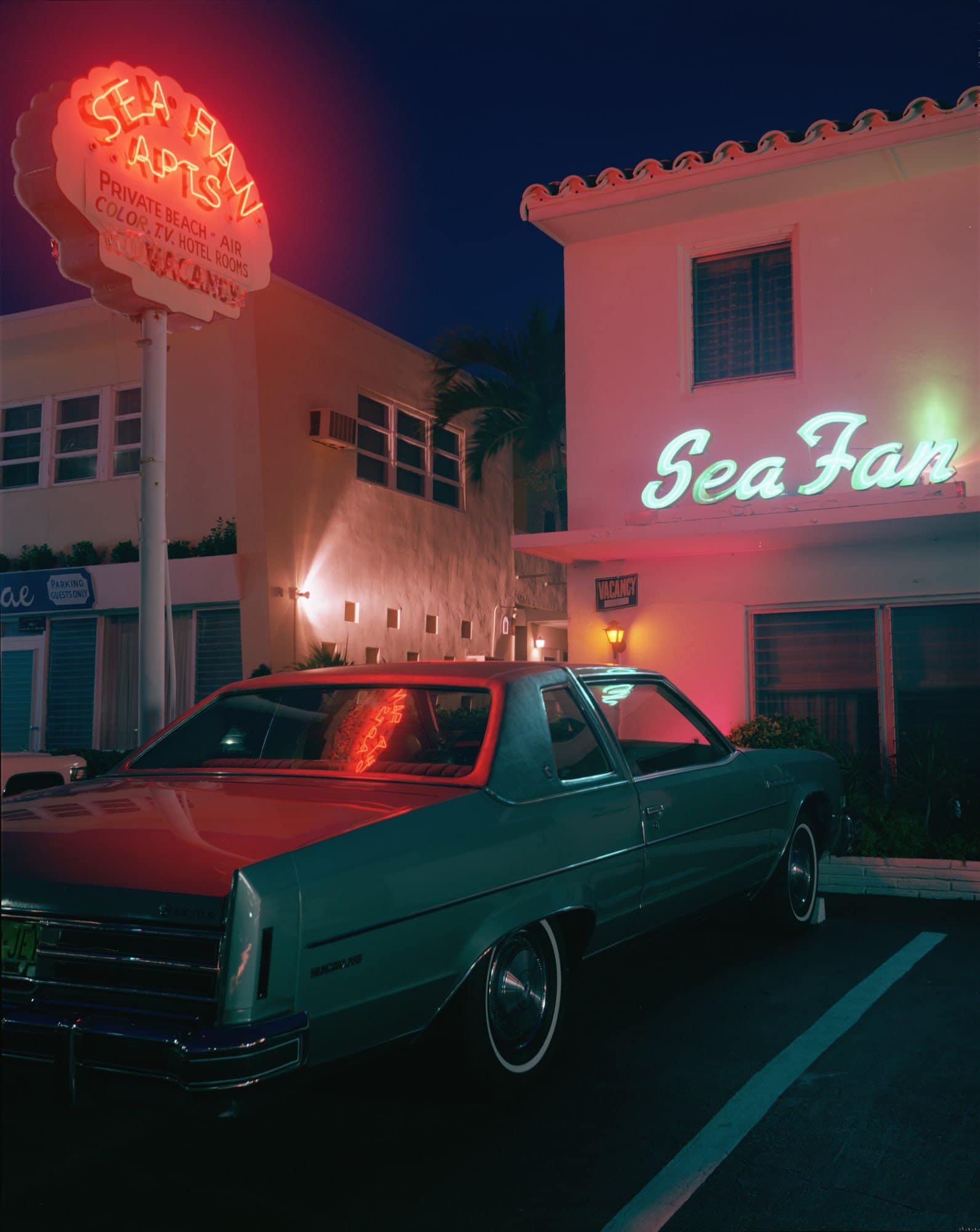
Joel Meyerowitz. Florida, 1978
When we break down the most fundamental components of photography, what we find are the very basic relationships between the recording light and passage of time. In our image saturated world the light/time relationship is one that’s often taken for granted among contemporary photographers and their audiences, yet it is within the grand oeuvre of Joel Meyerowitz that we find supreme cognizance of the medium’s First Principles. In Meyerowitz’ literature, light is consciousness, time is sacred, and images are meditations on eternal notions on the slow but consistent change that happens all around us.
From these beliefs, Meyerowitz’s Between the Dog and the Wolf is a body of work that places itself amid the transition from day to night and reflects upon the nature of dusk as a transitory state. Produced in the late 70s in Cape Cod (also the location of the photographer’s iconic Cape Light series), Meyerowitz presents a tonal chorus which flourishes in gradients of color and light. In his frames we contemplate the small poetics of Cape Cod, and we’re left with quiet wondering of the moments before and after these photographs were made. While some photographers produce equivalents of loud and attention-seeking pictures, Meyerowitz’s craft is one of slow savoring and careful construction that basks in nuance and grace.
As day transforms to night in Between the Dog and the Wolf, we find scenes of locations made for recreation: pool slides, ocean views, beach umbrellas and the like. However what Meyerowitz shows us isn’t the fun of these places, but the solemnity of them. As viewers we are alone in these scenes. It isn’t loneliness that guides us however, but peaceful solitude and the ever mystic sensation that occurs when the day fades to night; the witnessing of the cyclical nature of our world and the lives we lead upon it.
Details
Edition Size:
NFT 1/1
Resolution:
4k
Reserve Price:
5 ETH(From)
Works:
11
Sold:
8
Sales:
40 ETH
On SuperRare
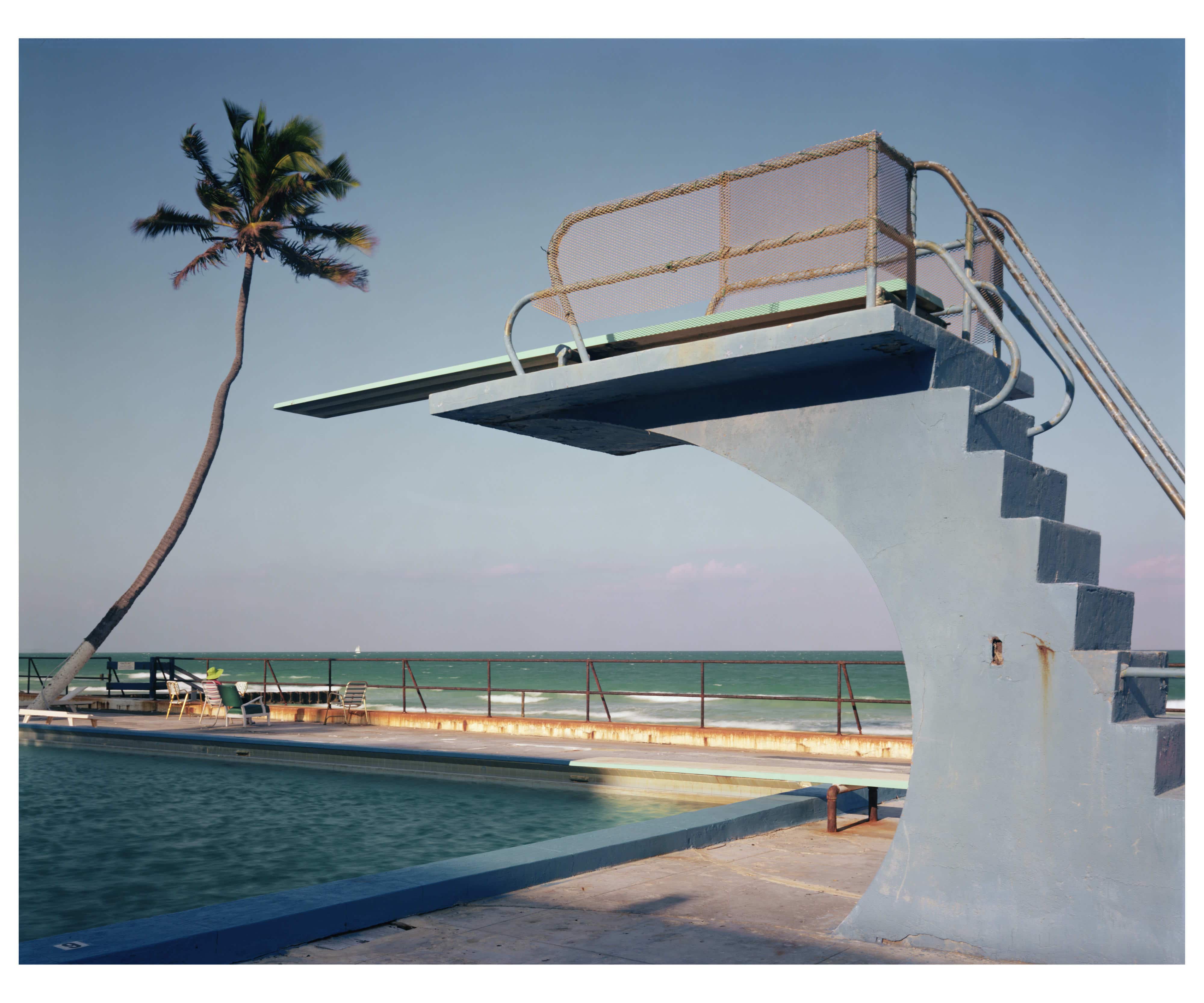
Joel Meyerowitz
Florida, 1978
On SuperRare

Joel Meyerowitz
Florida, 1978
On SuperRare

Joel Meyerowitz
Florida, 1978
On SuperRare
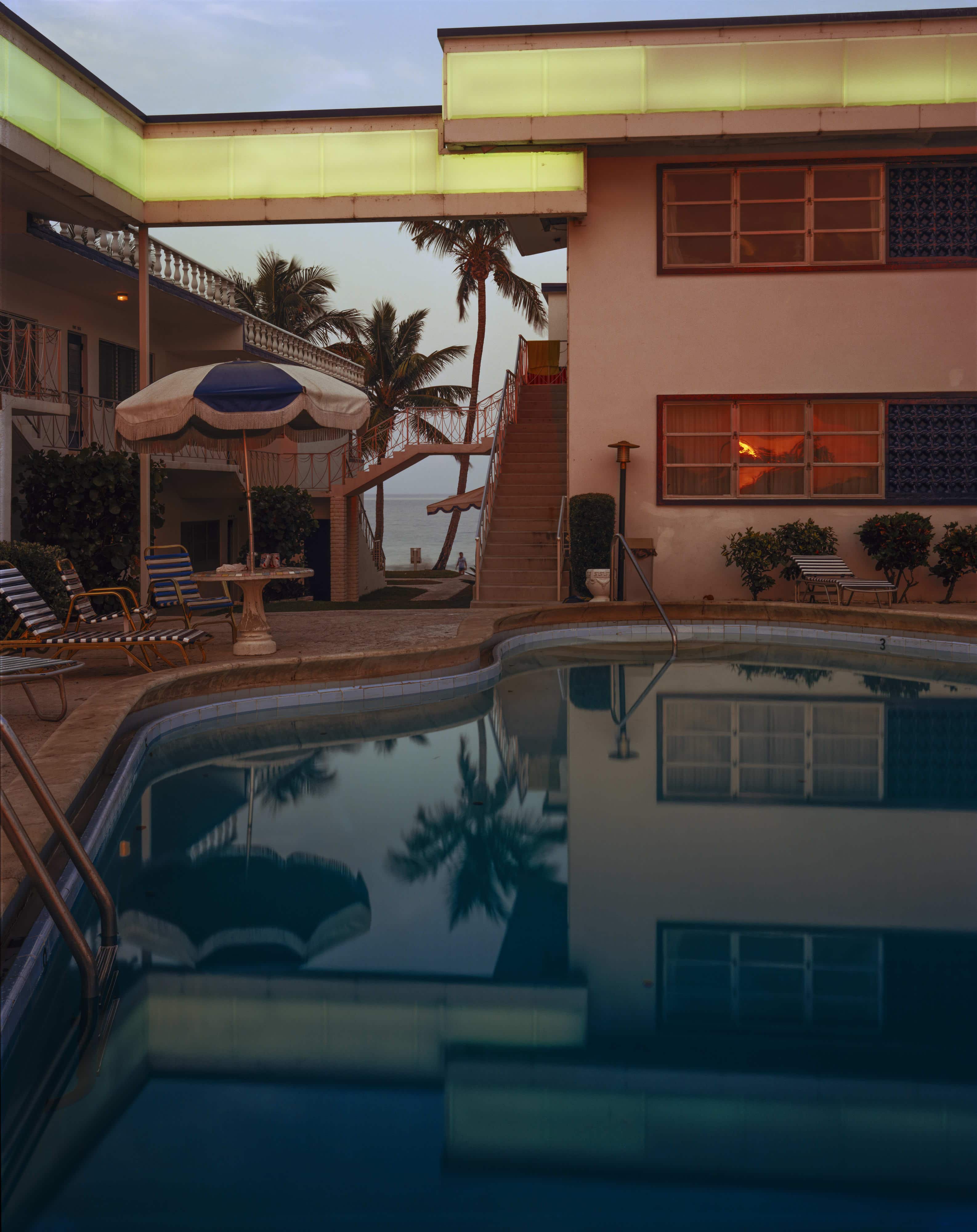
Joel Meyerowitz
Florida, 1978
On SuperRare
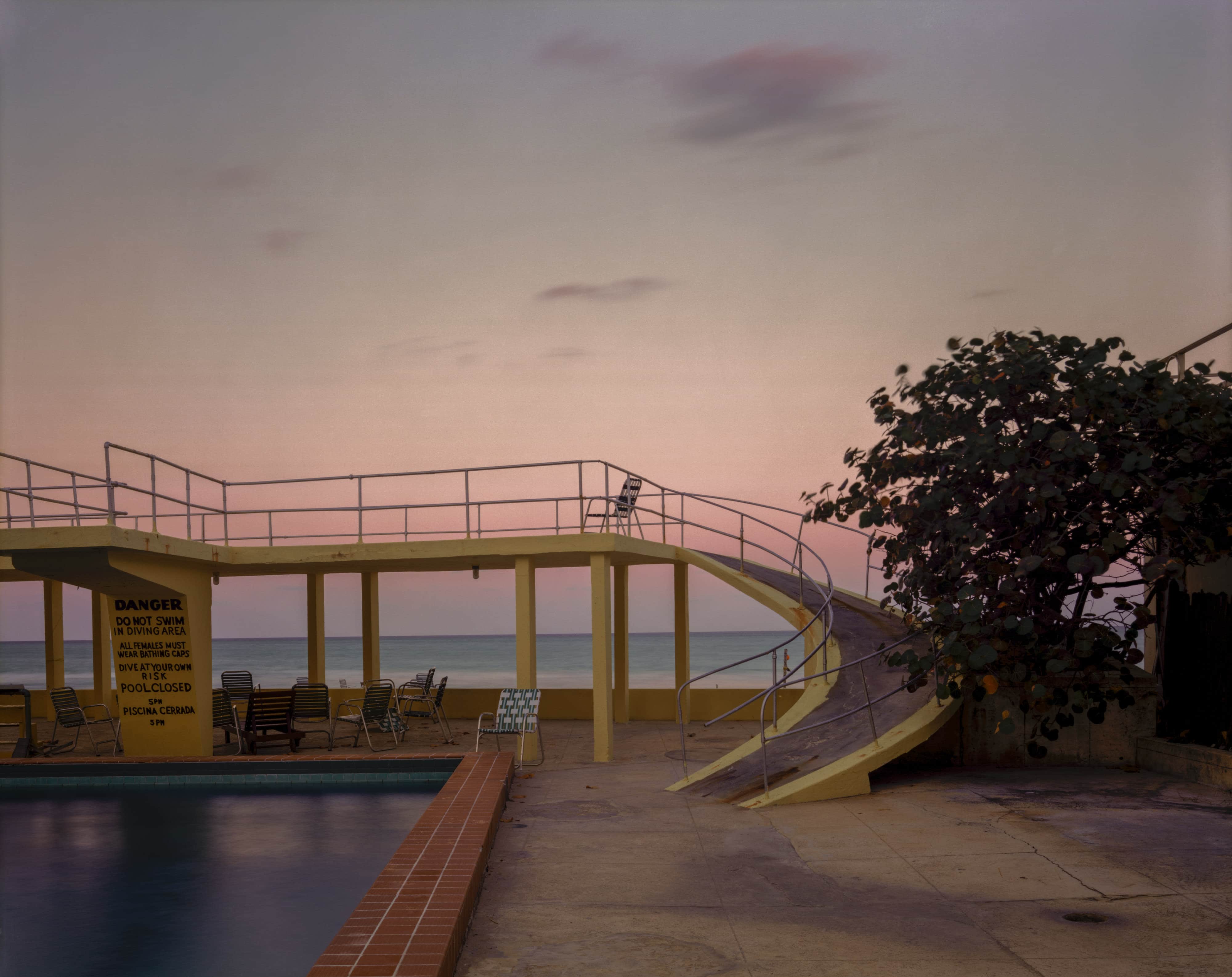
Joel Meyerowitz
Florida, 1978
On SuperRare

Joel Meyerowitz
Fort Lauderdale, Florida, 1977
On SuperRare
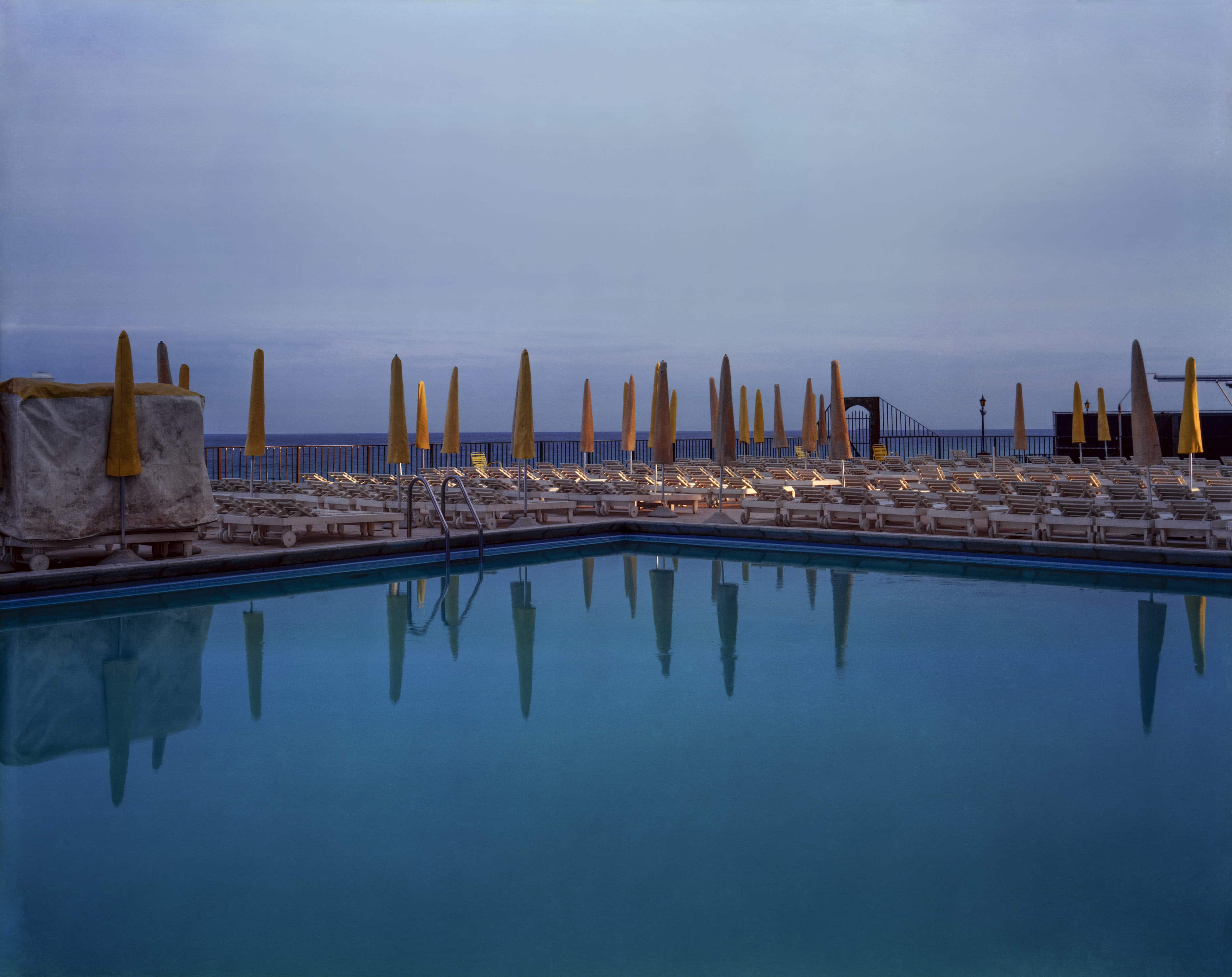
Joel Meyerowitz
Fort Lauderdale, Florida, 1977
On SuperRare
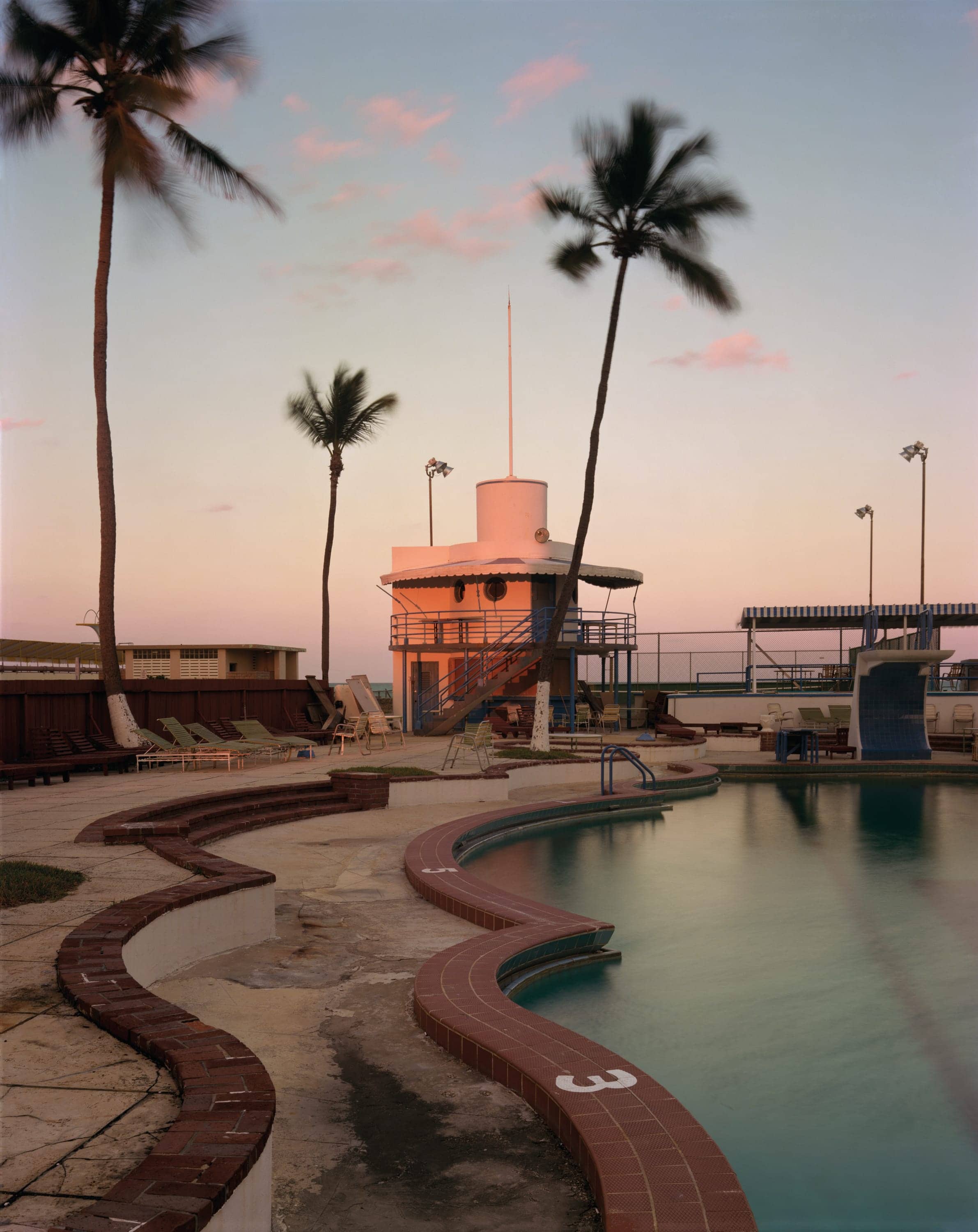
Joel Meyerowitz
Miami Beach, Florida, 1978
Florida
1978
Sold
Florida
1978
Sold
Florida
1978
Sold
Florida
1978
Sold
Florida
1978
Sold
Fort Lauderdale, Florida
1977
Sold
Fort Lauderdale, Florida
1977
Sold
Miami Beach, Florida
1978
Sold
Artist
Joel Meyerowitz
1938 (USA)
-
Website_
-
Instagram_
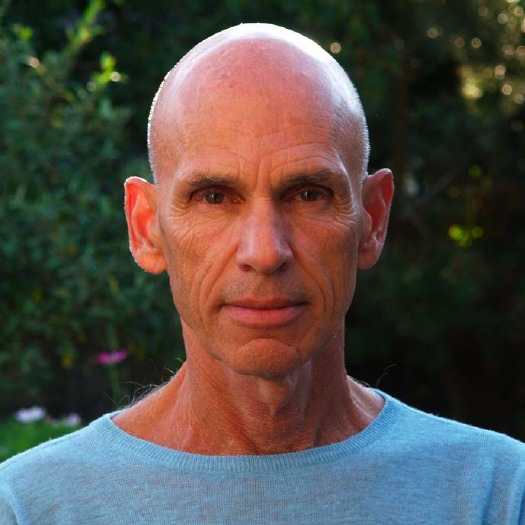
After studying painting, art history, and medical illustration at Ohio State University, he worked as an art director in advertising in the early 60’s. In 1962, Robert Frank made photographs for a booklet Meyerowitz designed, and it was while watching Frank work that he discovered that photographs could be made while both the photographer and the subject were in motion! The power of this observation made Meyerowitz quit his job immediately, borrow a camera, and go out onto the streets of New York. He has been on the streets ever since.
Meyerowitz began by using color film in 1962, not knowing that photographers of that era believed that black and white was the ‘art’ of photography. During his first days on the street, he met a young graphic designer, Tony Ray-Jones, who, like Meyerowitz, began using color as the most natural means of making photographs. Later that year Meyerowitz met, and became friends with Garry Winogrand, and together they walked and worked Fifth Avenue daily for nearly five years. Although Meyerowitz is a street photographer in the tradition of Henri Cartier-Bresson and Robert Frank, he transformed the medium with his pioneering use of color. As an early advocate, he became instrumental in changing the attitude toward color photography from one of resistance to nearly universal acceptance. His first book Cape Light (1978) is considered a classic work of color photography and has sold over 200,000 copies. Meyerowitz has published 42 books to date.
While Meyerowitz never felt constrained by any one discipline of photography, he says, “street photography was the only form of the medium that owed nothing to painting nor to the other plastic arts. It is purely photographic.” He feels that such a starting point naturally opens one to question the world around them, and questions are what lead us to make new kinds of photographs. This restless energy and open approach to subject matter has produced such varied work as; Photographs From a Moving Car (a one person show at MoMA in 1968), his Guggenheim Fellowship project, Still Going: America During Vietnam, his work with the large format, 8×10 view camera which resulted in such diverse books as; Cape Light (1978), St. Louis and The Arch (1980), A Summer’s Day (1985), Redheads (1991), Bay/Sky (1993), Aftermath: The World Trade Center Archive (2006), and others. These bodies of work deal with diverse subjects such as; light, portraits, landscape, cities, and history, and all clearly diverge from street photography, yet Meyerowitz’s eye and ideas remain consistent throughout.
In 1995, Meyerowitz produced and directed his first film, Pop. It came into being as spontaneously as a street photograph when Meyerowitz heard his father say, “the trouble with me is, I never get to the point where I get to the point!” In an instant he recognized that his father was lost and asking for help. The result is an intimate diary of a three-week road trip he made with his son, Sasha, and his father, Hy. This odyssey’s central character is an unpredictable, streetwise and witty 87- year-old with Alzheimer’s. It is both an open-eyed look at aging and a meditation on the significance of memory.
During sixty years of making photographs, Meyerowitz has consistently turned toward greater simplification. The Elements, an ongoing body of work begun in 2007, is an examination of the four phenomena that govern our lives and a search for a new way of describing their power. His works, still lives, are a departure from everything he has done before. He uses found objects; cast offs, which he places in a makeshift, theater-like space, ‘Teatrino’ he calls it, and finds himself giving them a second life. His interest in still lives developed into two projects photographing objects from the studios of Paul Cézanne and Giorgio Morandi.
Meyerowitz is a recipient of both the NEA and NEH awards. He was the only photographer to gain unrestricted access to Ground Zero after 9/11, which produced a body of work that led Meyerowitz to represent the United States at the Venice Biennale for Architecture in 2002. His work is in the collections of The Metropolitan Museum of Art, The Whitney Museum of American Art, MoMA, Tate Modern, The Victoria & Albert Museum, The Boston Museum of Fine Arts, The Art Institute of Chicago, Centre Pompidou, Rijksmuseum, Stedelijk Museum and others worldwide. Meyerowitz lives and works in London and New York.
Press + Articles
-
01
How Joel Meyerowitz Became a Pioneer of Colour Photography
AnOther Magazine (article)
-
02
Legendary Joel Meyerowitz's wonderfully mysterious photographs of America at dusk
Creative Boom (article)
-
03
Two decades of master photographer Joel Meyerowitz’s work on display now in London
The Washington Post (article)
